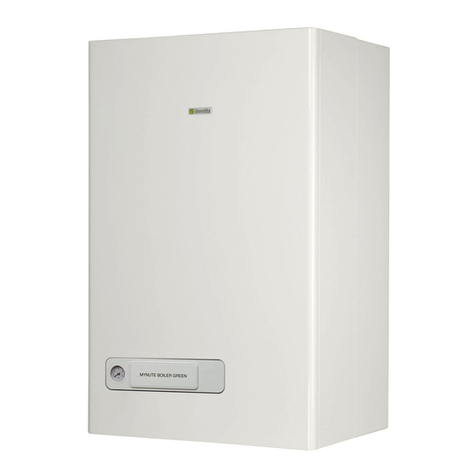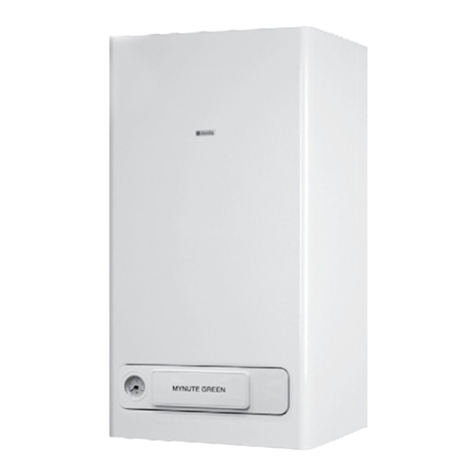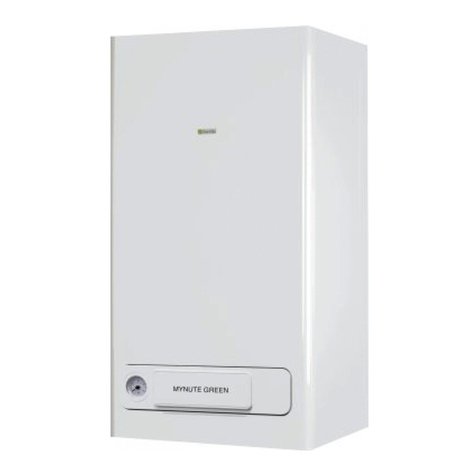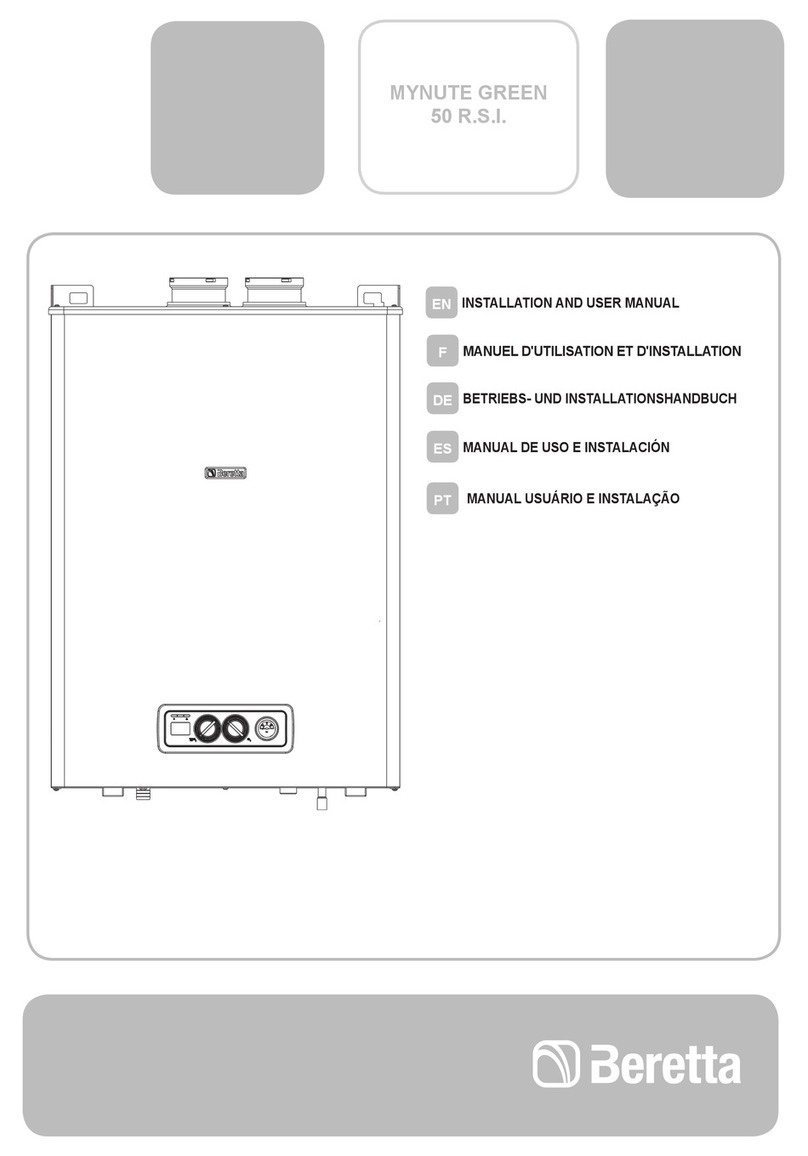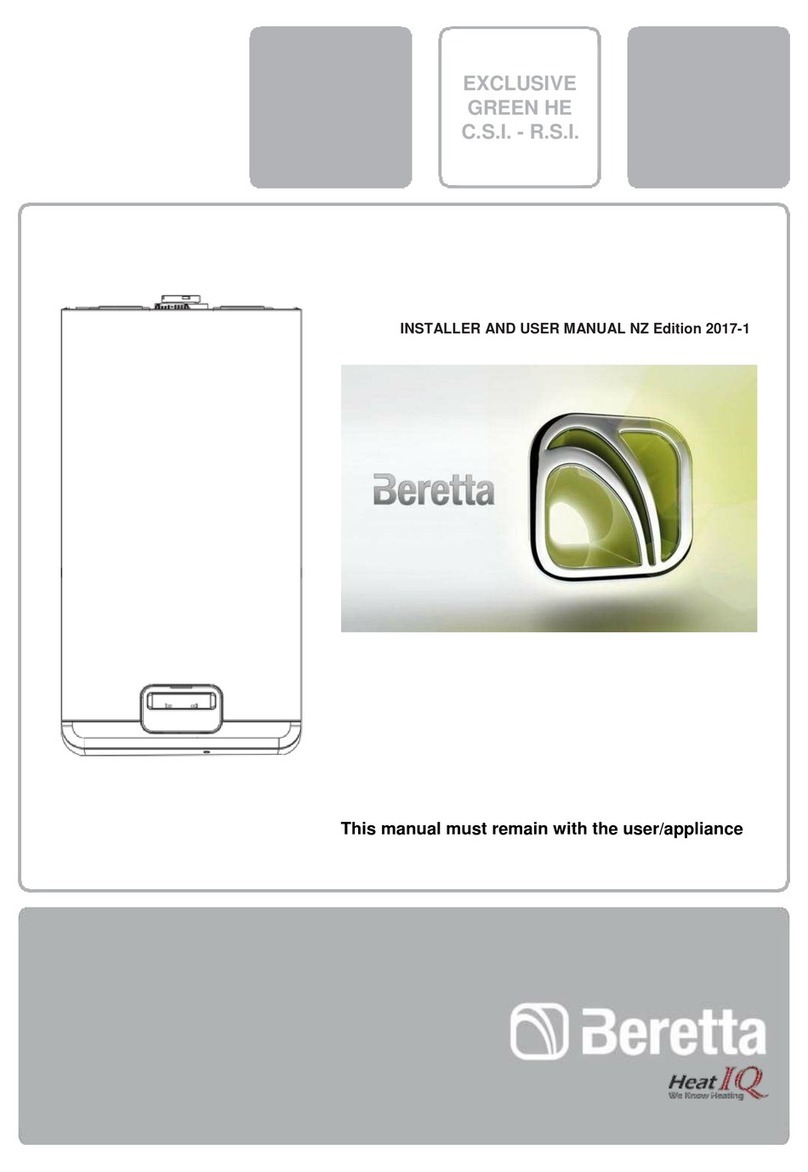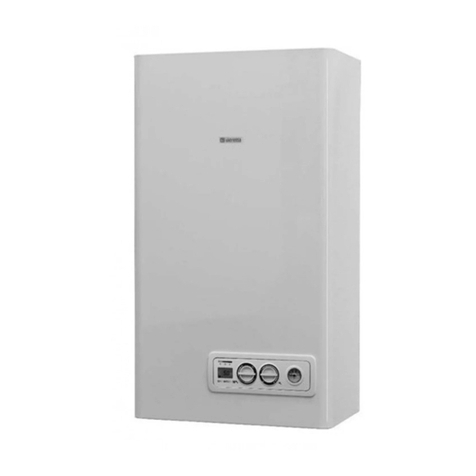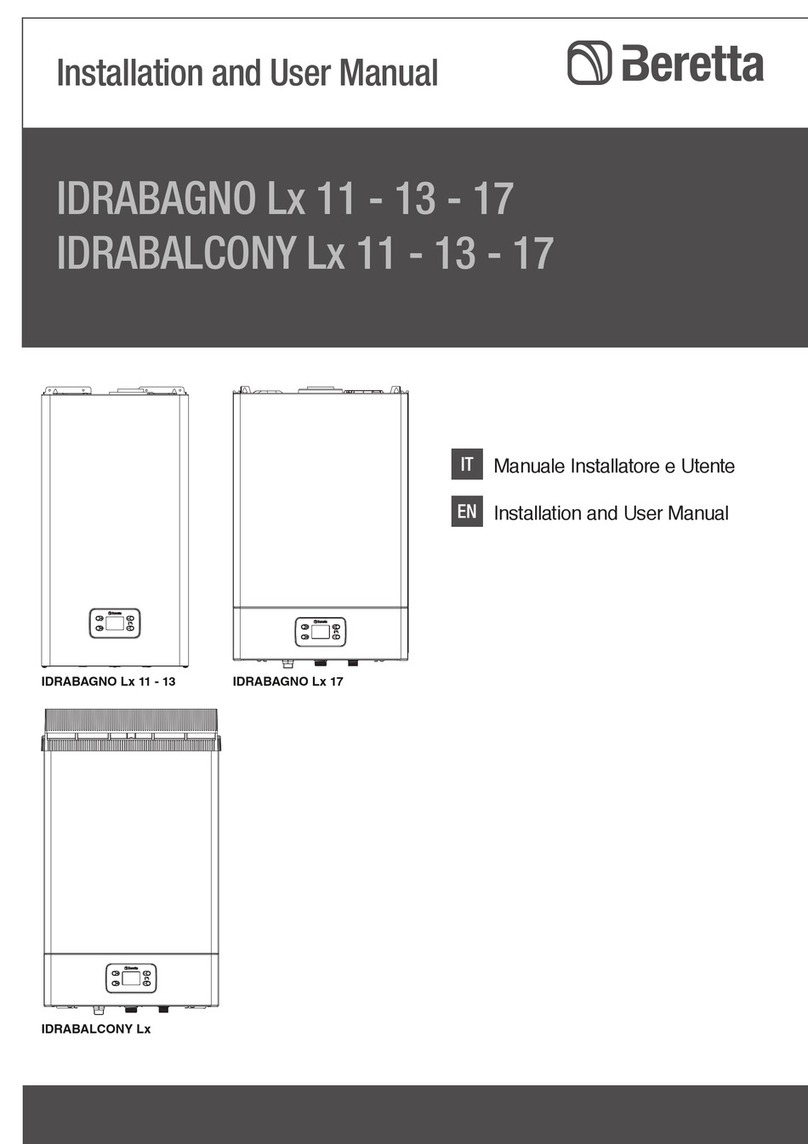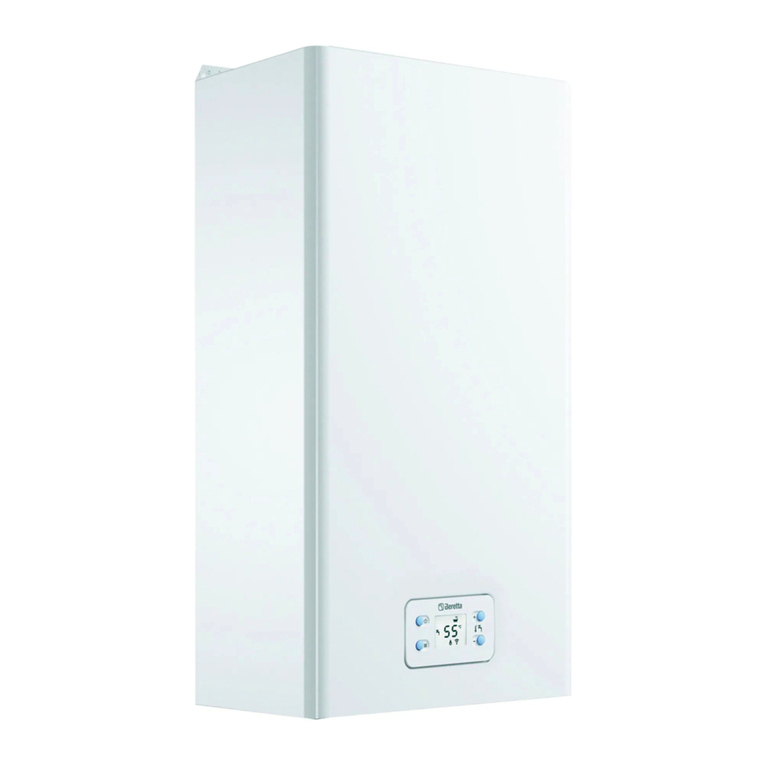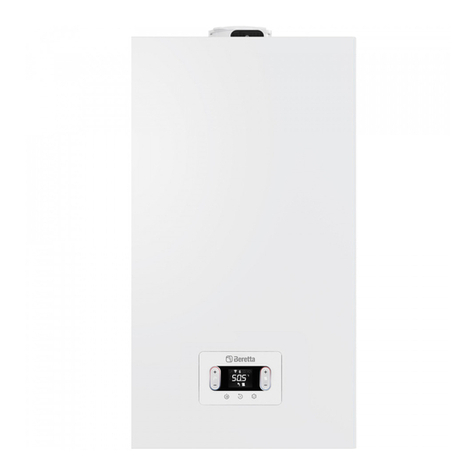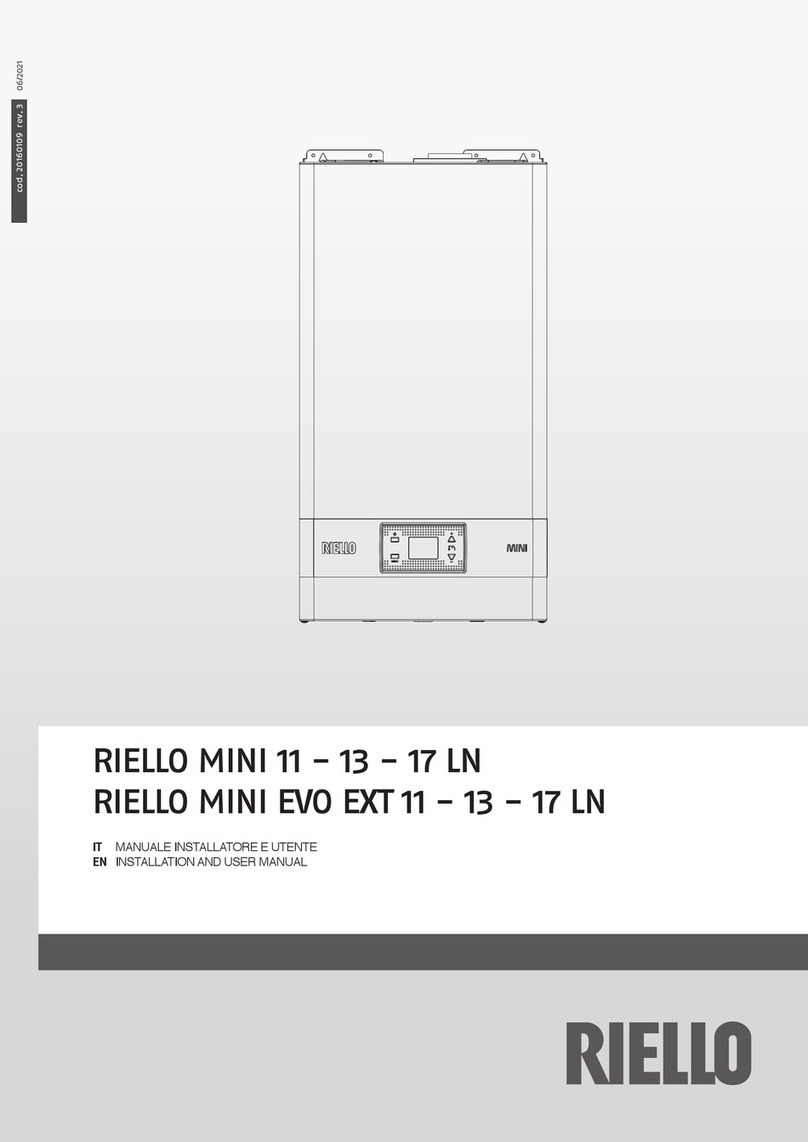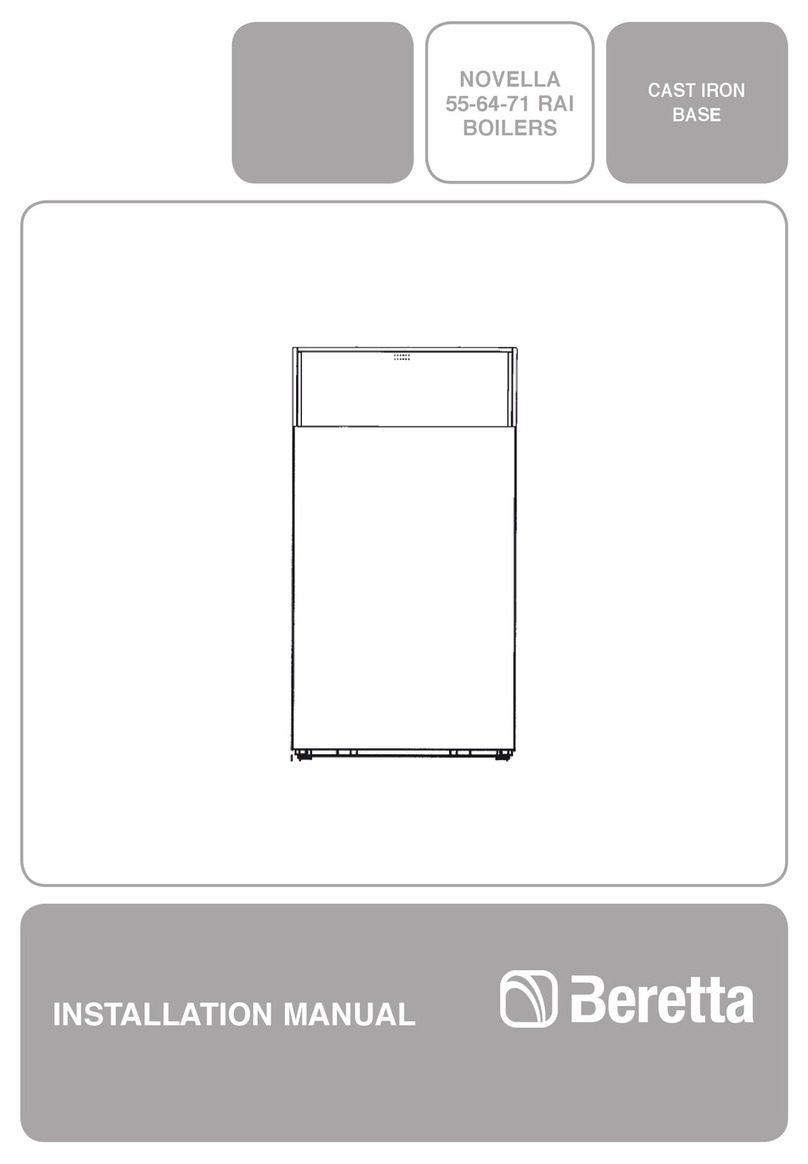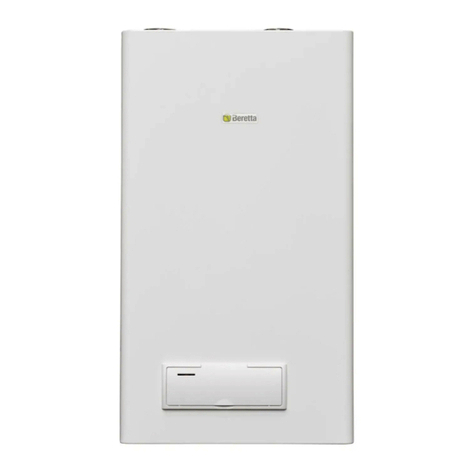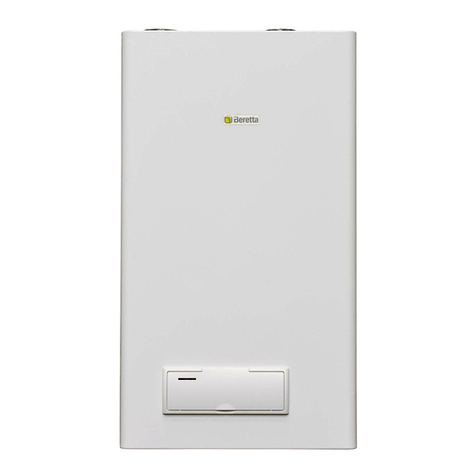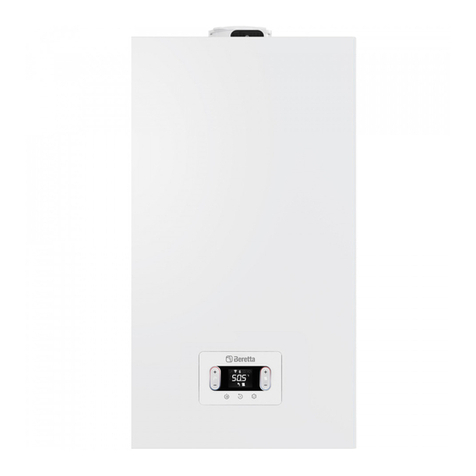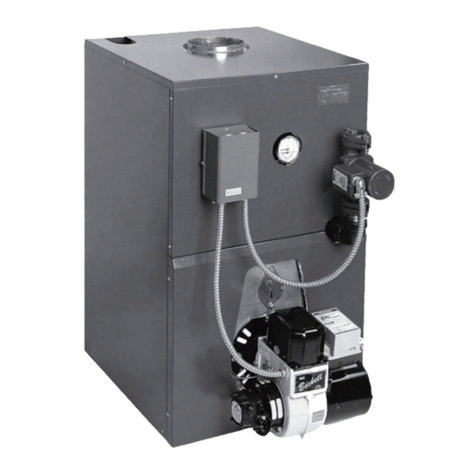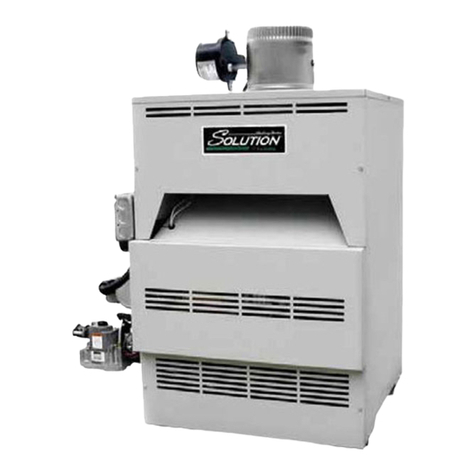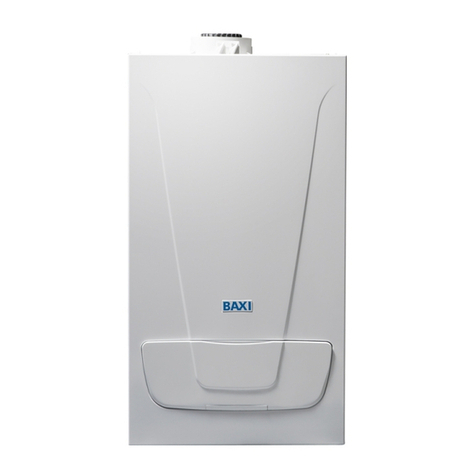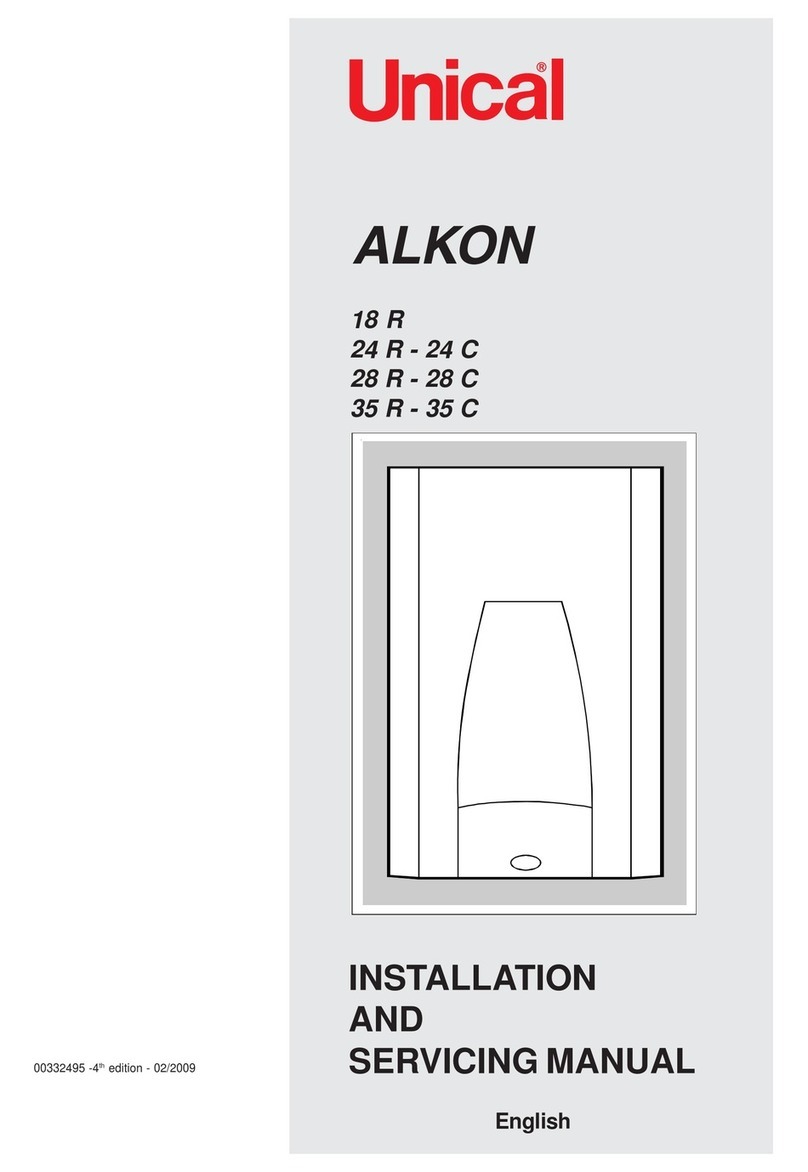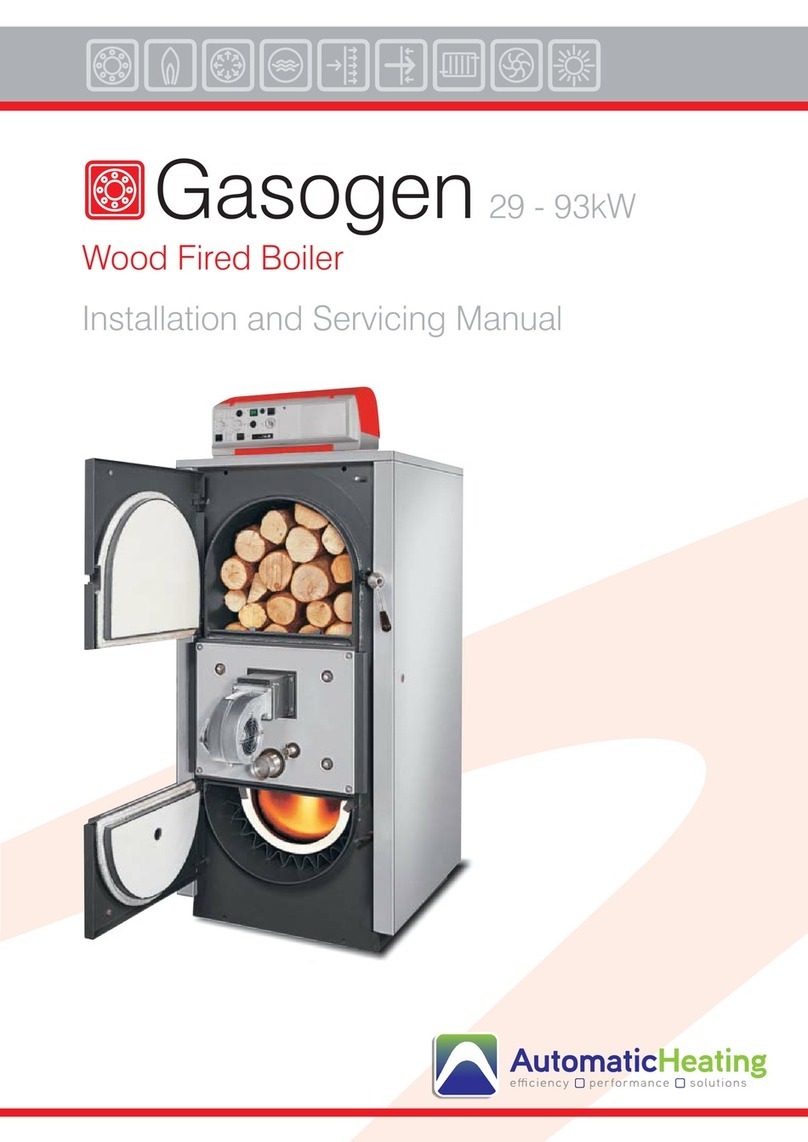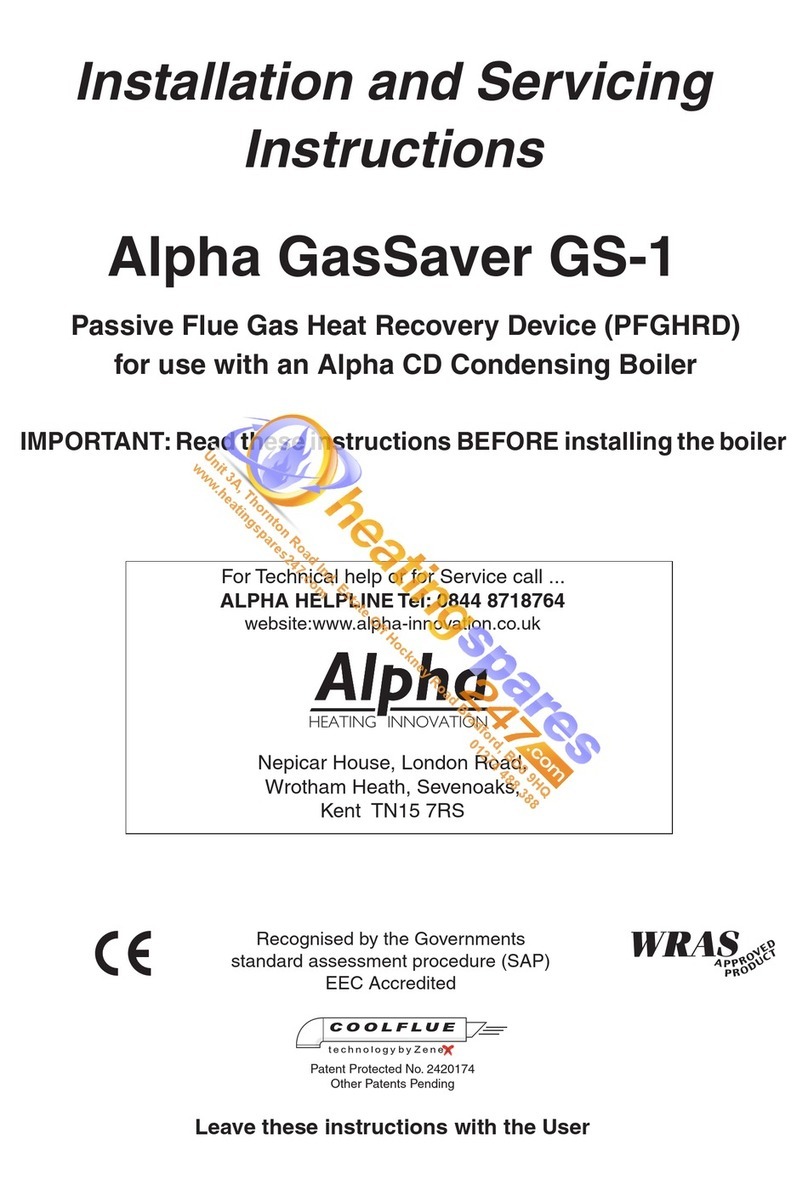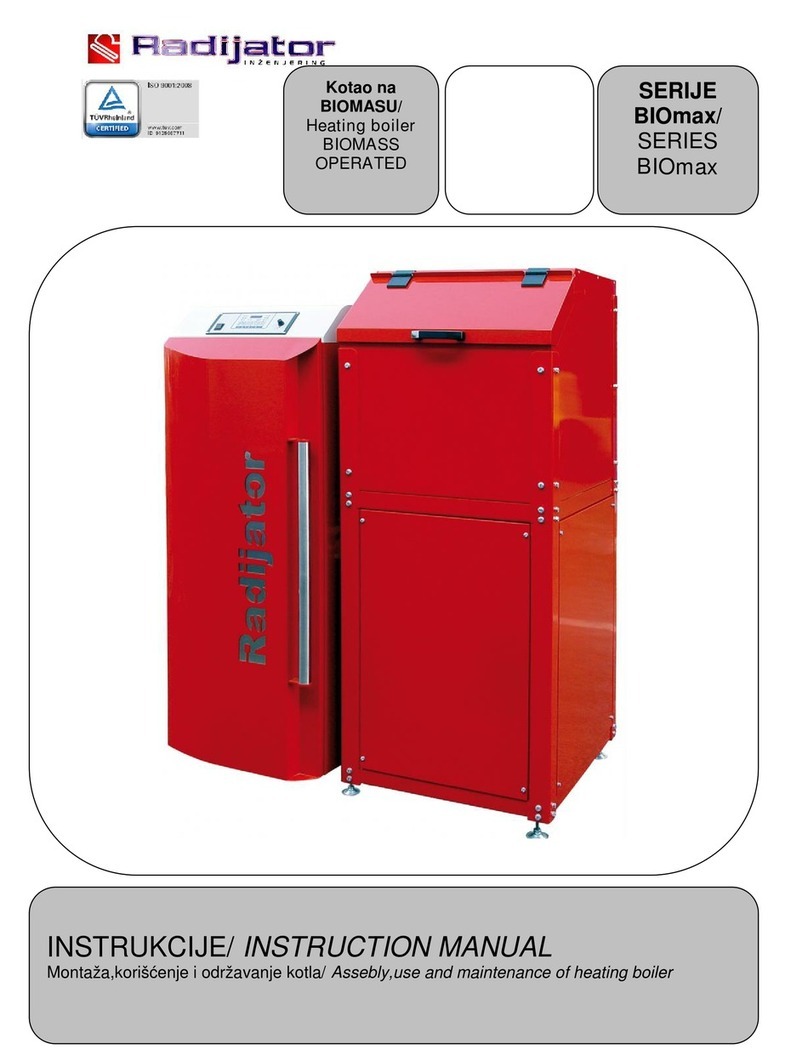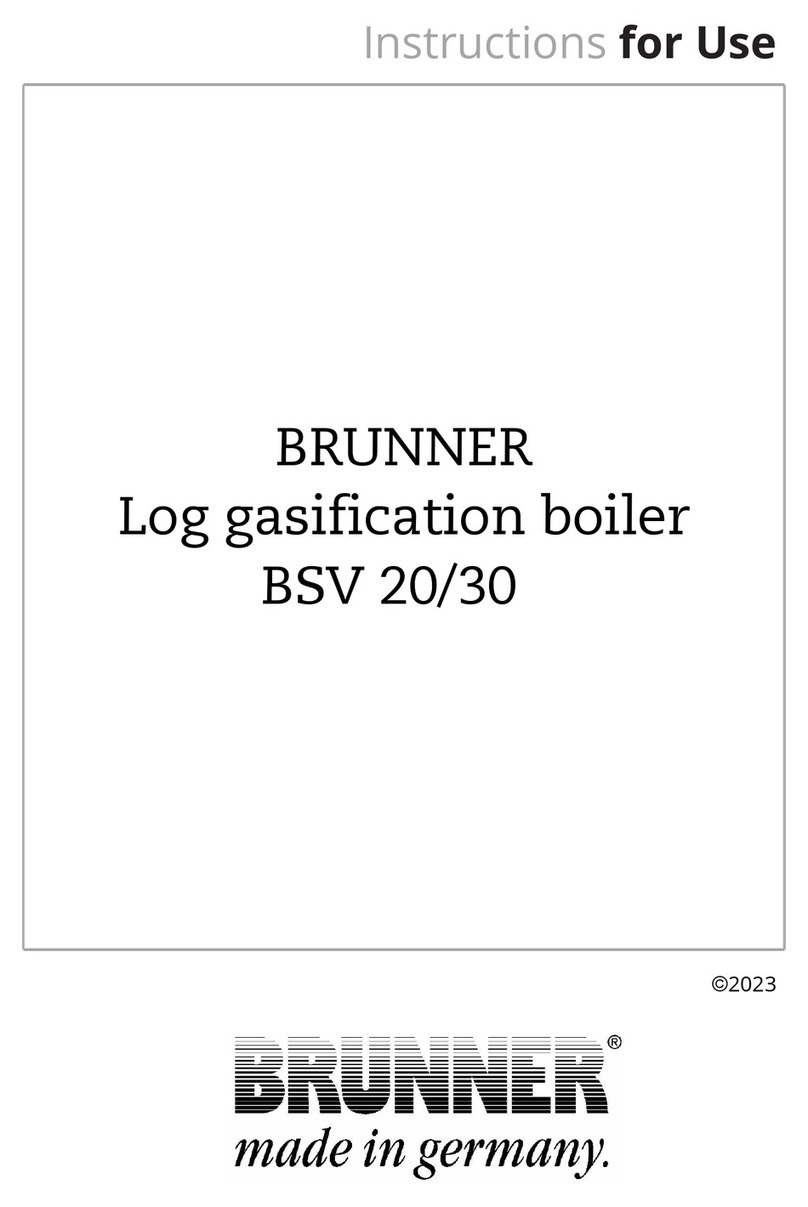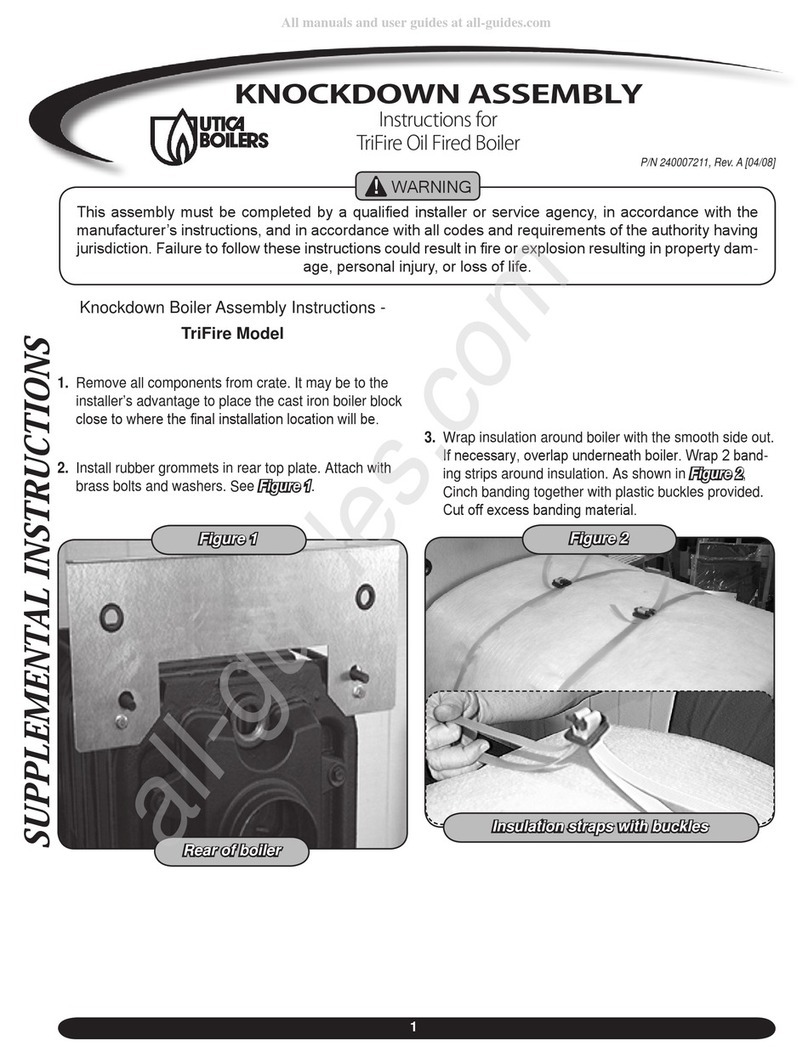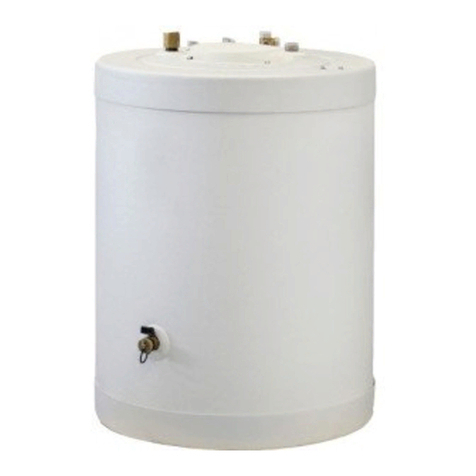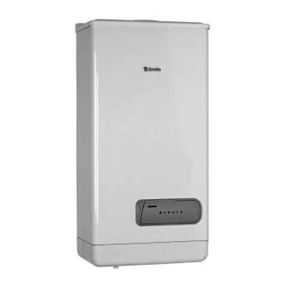
10
CIAO GREEN C.S.I.
To restore operation (deactivate alarms):
Faults A 01-02-03
Position the function selector to (OFF), wait 5-6 seconds then set it to
the required position (summer mode) or (winter mode).
If the reset attempts do not reactivate the boiler, contact the Technical As-
sistance Centre.
Fault A 04
In addition to the fault code, the digital display shows the symbol .
Check the pressure value indicated by the water gauge: if it is less than
0.3 bar, position the function selector to (OFF) and adjust the ¿lling tap
until the pressure reaches a value between 1 and 1.5 bar. Then position
the mode selector to the desired position (summer) or (winter).
The boiler will perform one purge cycle lasting approximately 2 minutes. If
pressure drops are frequent, request the intervention of the Technical As-
sistance Service.
Fault A 06
The boiler operates normally but cannot reliably maintain a constant do-
mestic hot water temperature, which remains set at around 50°C. Contact
the Technical Assistance Centre.
Fault A 07 - A 08
Contact the Technical Assistance Centre.
Fault A 09 with ¿xed red LED lit
Position the function selector to (OFF), wait 5-6 seconds then set it to
the required position (summer mode) or (winter mode). If the reset attempts
do not reactivate the boiler, request the intervention of the Technical As-
sistance Service.
Fault A 09 with Àashing red and green LEDs
The boiler is equipped with an auto-diagnostic system which, based on the
total number of hours in certain operating conditions, can signal the need
to clean the primary exchanger (alarm code 09 with Àashing red and green
LEDs and Àue gas meter >2,500). Once the cleaning operation has been
completed, using the special kit supplied as an accessory, the total hour
meter will need to be reset to zero as follows:
- switch off the power supply
- remove the housing
- loosen the ¿xing screw then turn the instrument panel
- loosen the ¿xing screws on the cover (F) to access the terminal board (¿g. 16)
- while the boiler is powered up, using a small screwdriver included, press
the CO button (¿g. 26) for at least 4 seconds, to check the meter has
been reset, power down then power up the boiler; the meter reading is
shown on the monitor after the “-C-” sign.
Live electrical parts (230 V AC).
Note: the meter resetting procedure should be carried out after each in-
depth cleaning of the primary exchanger or if this latter is replaced. To
check the status of the total hour meter, multiply the reading by 100 (e.g.
reading of 18 = 1800 total hours; reading of 1 = 100 total hours).
The boiler continues to operate normally even when the alarm is activated.
Fault A 77
This is an automatic-reset fault, if the boiler does not restart, contact the
Technical Assistance Centre.
Fixed yellow LED
Pre-heating function activated
Flashing yellow LED
Combustion analysis in progress.
4.4 Alarm records
The “ALARM RECORDS” function starts automatically once the display has
been on for 2 hours, or immediately by setting the P1 parameter to 1.
The records include all the latest alarms, up to a maximum of 5 alarms, and
they are displayed in sequence by pushing and releasing the P1 button on
the display board. If the records are empty (P0=0) or if tracking the same is
disabled (P1=0), the display function is not available. Alarms are displayed
in reverse order compared to the order in which they occurred: this means
that the last alarm generated is the ¿rst to be displayed. To delete the
alarms records, simply set parameter P0 to 0.
NOTE: To get to the P1 button the cover on the control panel must be remo-
ved and the display board must be identi¿ed (¿g. 37a).
PROGRAMMING PARAMETERS
Functioning of the display can be personalised by programming three pa-
rameters:
Param. Default Description
P0 0 Deletion of alarms records
(0 = records empty / 1 = records not empty)
P1 0 Immediate activation of alarm record management
(0 = delayed records management activated / 1 =
immediate records management activated
P2 0 Do not change
envisaged delivery T. - Tshift
KT= 20- min. envisaged external T.
When button P1 on the display (¿g. 37a) is held down for at least 10 sec,
the programming procedure is activated. The three parameters, with their
respective values, are shown in rotation on the display (¿g. 37b). To edit a
parameter value, simply push the P1 button again when the required para-
meter is displayed, and then hold it down until the value switches from 0 to
1 or vice-versa (approx. 2 sec).
The programming procedure is closed automatically after 5 minutes, or if
there is an electrical power failure
4.5 Boiler con¿guration
There is a series of jumpers (JPX) available on the electronic board which
enable the boiler to be con¿gured.
To access the board, proceed as follows:
- turn off the main switch on the system
- loosen the ¿xing screws on the housing, move the base of the housing
forwards and then upwards to unhook it from the chassis
- undo the ¿xing screws (E) from the instrument panel (¿g. 14)
- loosen the screws (F - ¿g. 16) to remove the cover of the terminal board
(230V)
JUMPER JP7 - ¿g. 38:
preselection of the most suitable heating temperature adjustment ¿eld ac-
cording to the installation type.
Jumper not inserted - standard installation
Standard installation 40-80°C
Jumper inserted - Àoor installation
Floor installation 20-45°C.
In the manufacturing phase, the boiler is con¿gured for standard installations.
JP1
Calibration (Range Rated)
JP2 Reset heating timer
JP3 Calibration (see paragraph on “Adjustments”)
JP4 Absolute domestic hot water thermostat selector
JP5 Do not use
JP6 Enable night-time compensation function and continuous pump (only
with external sensor connected)
JP7 Enable management of low temperature/standard installations (see
above)
JP8 Do not use
4.6 Setting the thermoregulation (graphs 1-2-3)
The thermoregulation only operates with the external sensor connected;
once installed, connect the external sensor (accessory available on request)
to the special terminals provided on the boiler terminal board (¿g. 5).
This enables the THERMOREGULATION function.
Selecting the compensation curve
The compensation curve for heating maintains a theoretical temperature of
20°C indoors, when the external temperature is between +20°C and -20°C.
The choice of the curve depends on the minimum external temperature
envisaged (and therefore on the geographical location), and on the delivery
temperature envisaged (and therefore on the type of system). It is carefully
calculated by the installer on the basis of the following formula:
Tshift = 30°C standard installations
25°C Àoor installations
If the calculation produces an intermediate value between two curves, you
are advised to choose the compensation curve nearest the value obtained.
Example: if the value obtained from the calculation is 1,3 this is between
curve 1 and curve 1,5. Choose the nearest curve, i.e. 1,5.
Select the KT using trimmer P3 on the board (see multiwire wiring diagram).
To access P3:
- remove the housing,
- loosen the ¿xing screw on the instrument panel
- turn the instrument panel towards you
- loosen the ¿xing screws on the terminal board cover
- unhook the board casing
Live electrical parts (230 V AC).
The KT values which can be set are as follows:
standard installation: 1,0-1,5-2,0-2,5-3,0
Àoor installation 0,2-0,4-0,6-0,8
and these are displayed for approximately 3 seconds after rotation of the
trimmer P3.
TYPE OF HEAT REQUEST
Boiler connected to room thermostat (JUMPER 6 not inserted)
The heat request is made by the closure of the room thermostat contact,
while the opening of the contact produces a switch-off. The delivery tem-
perature is automatically calculated by the boiler, although the user may
modify the boiler settings. Using the interface to modify the HEATING, you
